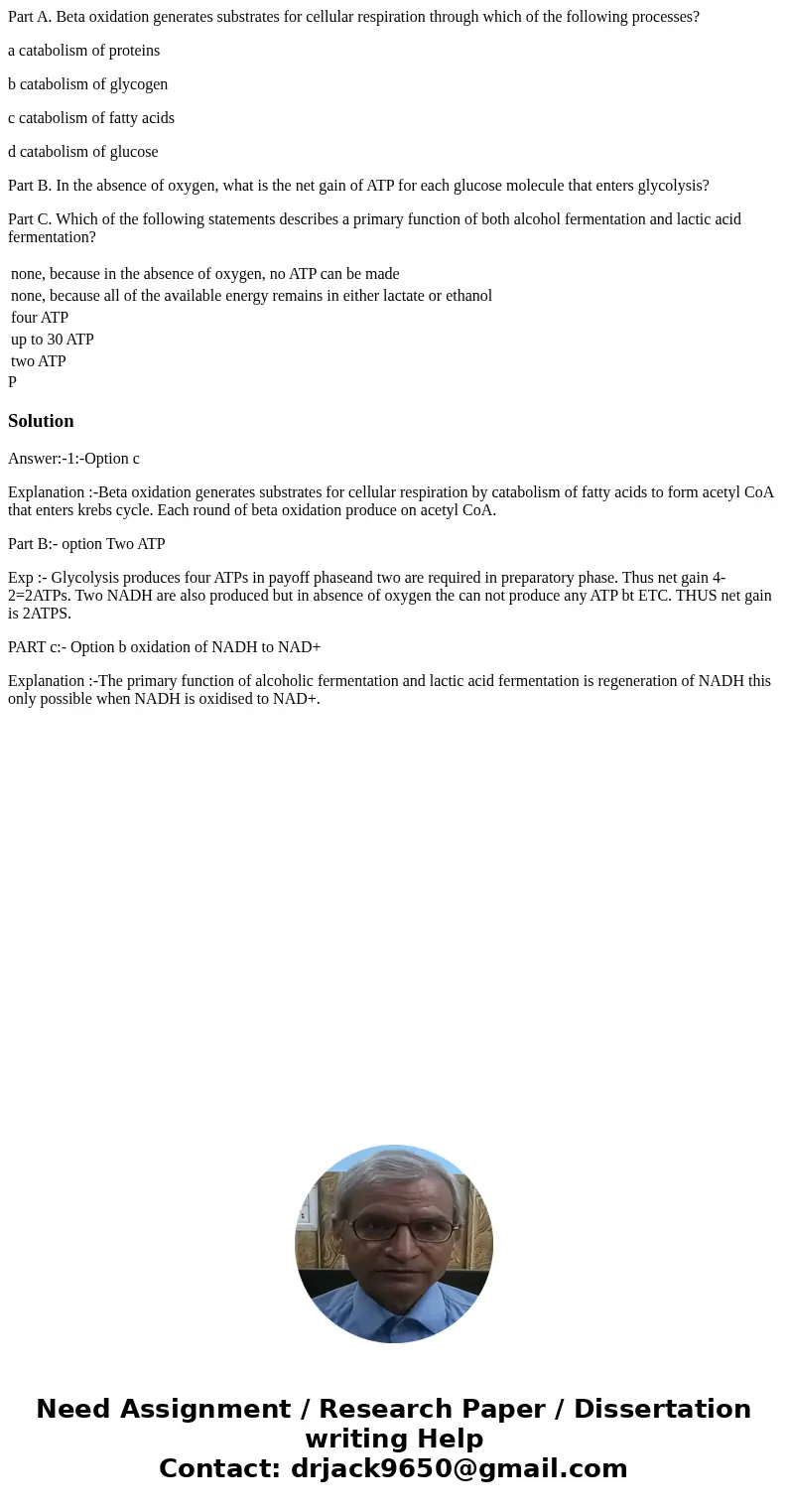Part A Beta oxidation generates substrates for cellular resp
Part A. Beta oxidation generates substrates for cellular respiration through which of the following processes?
a catabolism of proteins
b catabolism of glycogen
c catabolism of fatty acids
d catabolism of glucose
Part B. In the absence of oxygen, what is the net gain of ATP for each glucose molecule that enters glycolysis?
Part C. Which of the following statements describes a primary function of both alcohol fermentation and lactic acid fermentation?
| none, because in the absence of oxygen, no ATP can be made |
| none, because all of the available energy remains in either lactate or ethanol |
| four ATP |
| up to 30 ATP |
| two ATP |
Solution
Answer:-1:-Option c
Explanation :-Beta oxidation generates substrates for cellular respiration by catabolism of fatty acids to form acetyl CoA that enters krebs cycle. Each round of beta oxidation produce on acetyl CoA.
Part B:- option Two ATP
Exp :- Glycolysis produces four ATPs in payoff phaseand two are required in preparatory phase. Thus net gain 4-2=2ATPs. Two NADH are also produced but in absence of oxygen the can not produce any ATP bt ETC. THUS net gain is 2ATPS.
PART c:- Option b oxidation of NADH to NAD+
Explanation :-The primary function of alcoholic fermentation and lactic acid fermentation is regeneration of NADH this only possible when NADH is oxidised to NAD+.

 Homework Sourse
Homework Sourse